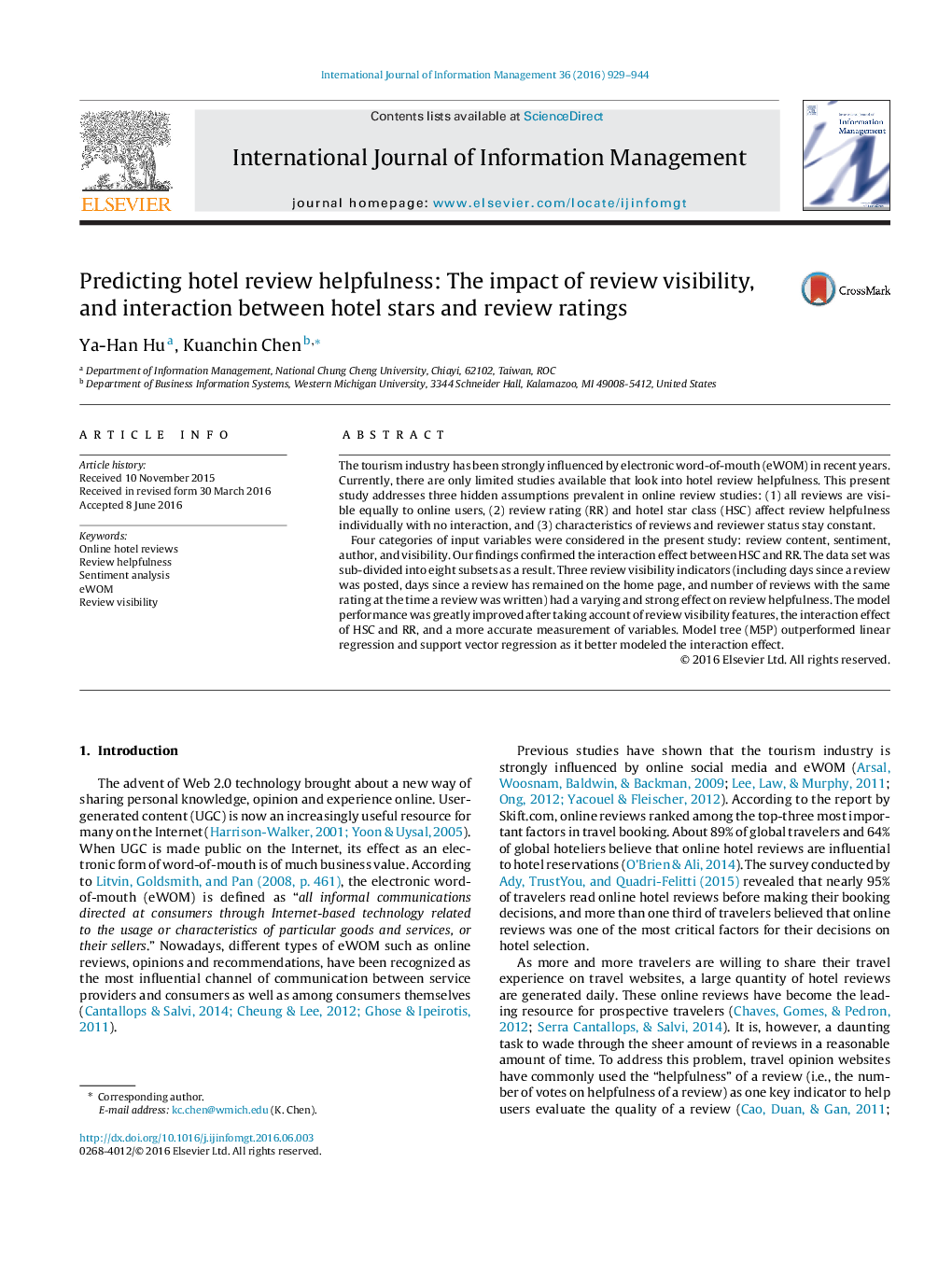| Article ID | Journal | Published Year | Pages | File Type |
|---|---|---|---|---|
| 1025462 | International Journal of Information Management | 2016 | 16 Pages |
•The interaction effect of Hotel Star Class (HSC) and Review Rating (RR) is confirmed to affect review helpfulness.•The concept of review helpfulness is posed to include three variables. All had a varying and significant effect on review helpfulness.•Model tree (M5P) outperformed linear regression and support vector regression.•Certain predictors (such as badges earned) are back-traced to the time when a review was written in order to improve prediction accuracy of existing studies.•Prediction accuracy improves after review visibility, interaction effect and improved data collection are taken into account.
The tourism industry has been strongly influenced by electronic word-of-mouth (eWOM) in recent years. Currently, there are only limited studies available that look into hotel review helpfulness. This present study addresses three hidden assumptions prevalent in online review studies: (1) all reviews are visible equally to online users, (2) review rating (RR) and hotel star class (HSC) affect review helpfulness individually with no interaction, and (3) characteristics of reviews and reviewer status stay constant.Four categories of input variables were considered in the present study: review content, sentiment, author, and visibility. Our findings confirmed the interaction effect between HSC and RR. The data set was sub-divided into eight subsets as a result. Three review visibility indicators (including days since a review was posted, days since a review has remained on the home page, and number of reviews with the same rating at the time a review was written) had a varying and strong effect on review helpfulness. The model performance was greatly improved after taking account of review visibility features, the interaction effect of HSC and RR, and a more accurate measurement of variables. Model tree (M5P) outperformed linear regression and support vector regression as it better modeled the interaction effect.
